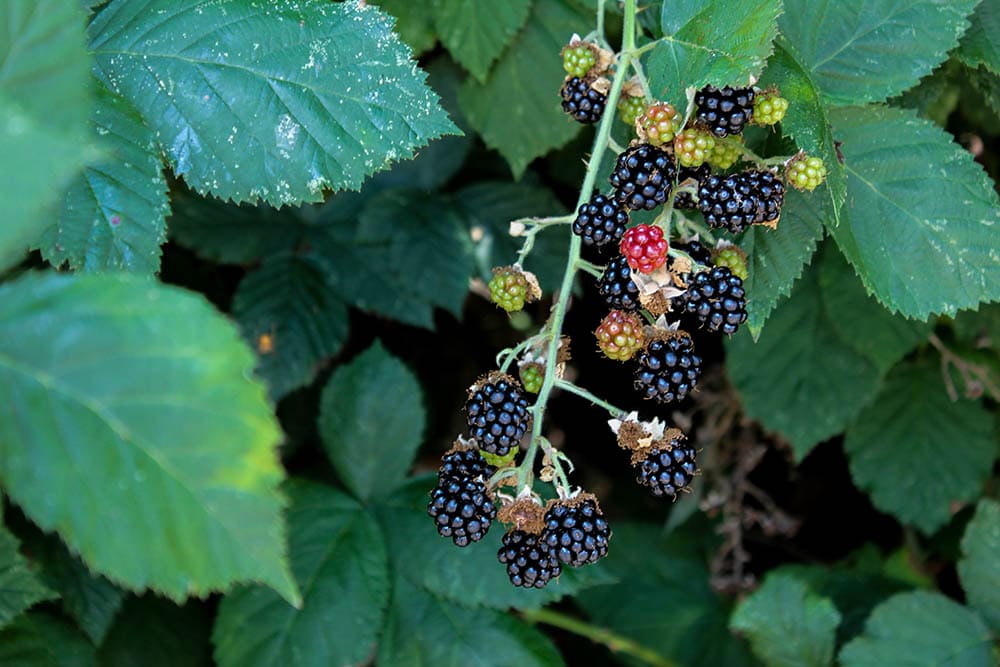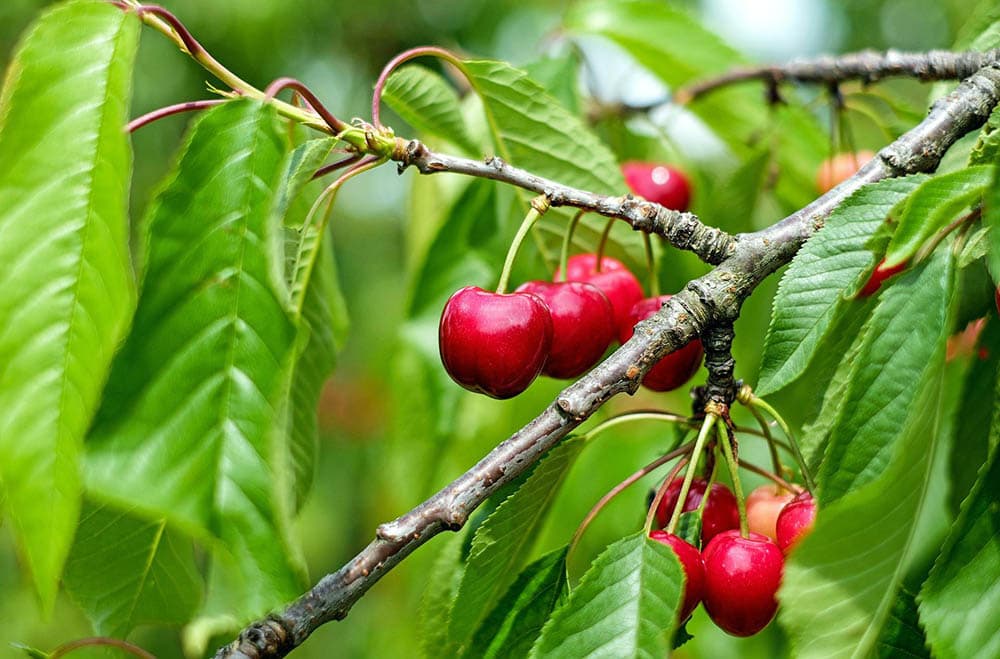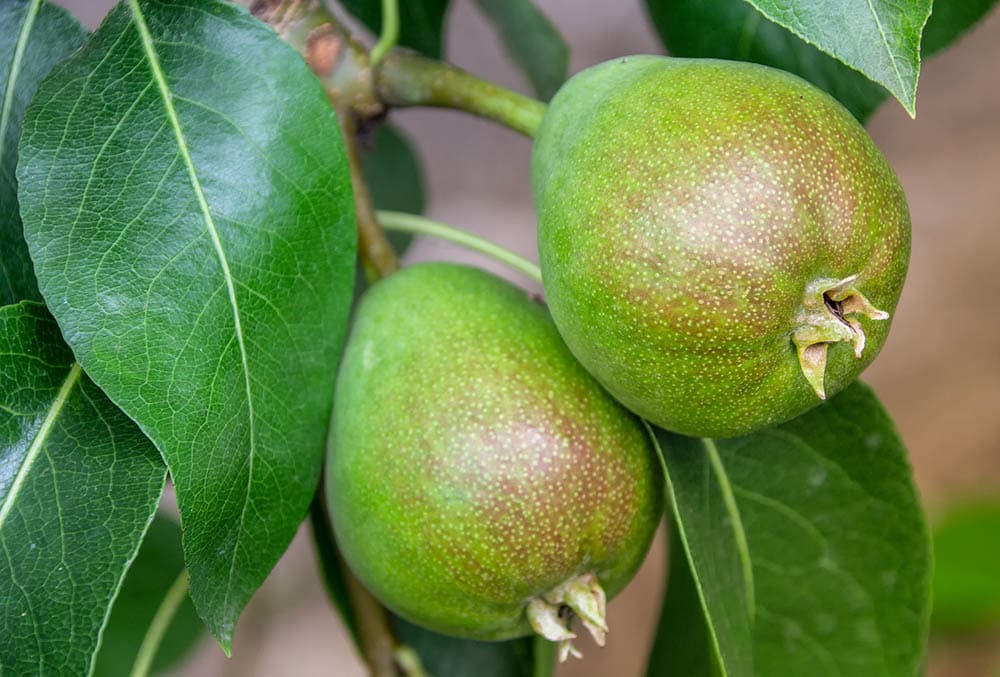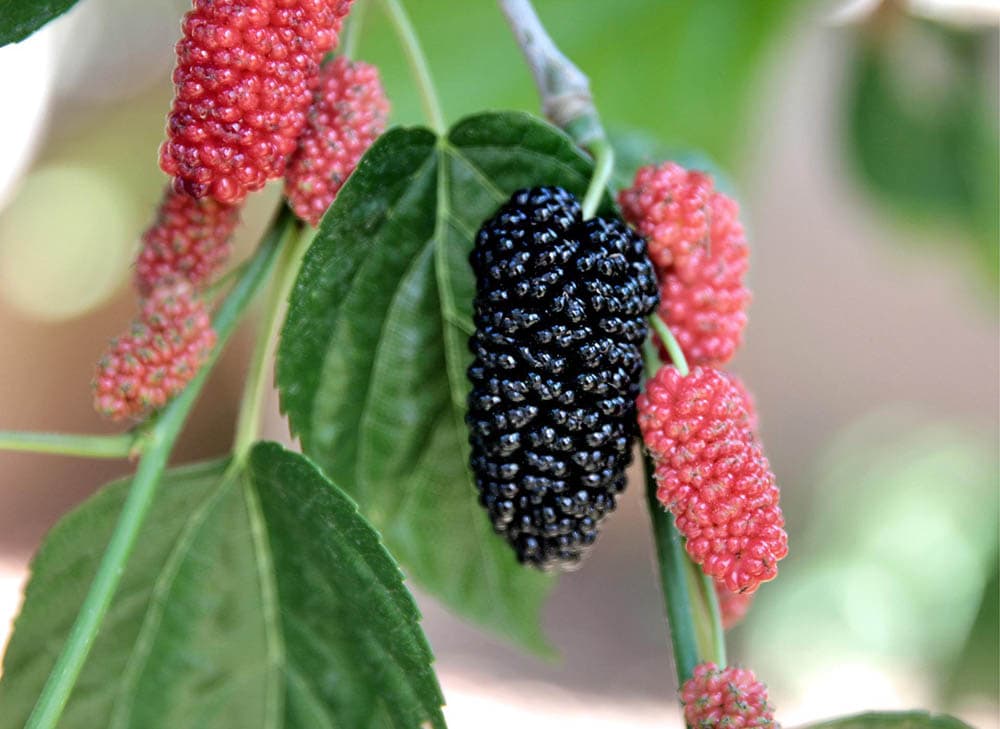8 Fruit Trees That Grow In Shade (with Pictures)
-
- Last updated:

Everyone has shady areas in their gardens and yards, and many people stay away from planting anything in them due to the lack of sun. While you might think that there are no fruit trees that prosper in the shade, the truth is quite different.
There are stunning fruit trees and fruiting berry plants that grow in the shade, and we will talk more about them in the article. If you want to plant fruit in your shady garden, now might be the perfect time to do so, so that you can later enjoy the fruits of your labor. Check out our eight favorites below:

The 8 Fruit Trees That Grow in Shade
1. Plum

| Sun: | Partial shade |
| Water: | Weekly watering |
| Soil: | Well-drained, moist |
Although most plum trees need full sun to thrive, certain plum varieties prosper in the shade. The most popular plum variety that grows in the shade is “Czar”, and it needs partial shade to thrive.
This plant is typically 9 to 13 feet tall, and it produces large, dark fruits many people use for cooking. You should plant this plum variety as dormant, and it will bear fruit 3 to 4 years after planting. A great thing about this plant is that it’s self-pollinating, so you only need one tree.
2. Cherry

| Sun: | Partial shade |
| Water: | Weekly watering |
| Soil: | Well-drained, fertile, acidic |
Cherry plants can also thrive in partial shade, making them an excellent choice for shaded gardens. Cherry fruits are already sour, and they don’t need sun exposure to make them sweeter. The most popular cherry variety that prospers in the shade is the “Morello.” It can be quite large and grow to be over 20 feet high.
The fruits are bitter and sour, making them a great addition to pies, jams, and other culinary delicacies. Typically, these cherries are harvest-ready in late July.
3. Hardy Kiwi

| Sun: | Partial shade |
| Water: | Weekly watering |
| Soil: | Rich. well-drained |
Hardy kiwi is another fruit that can prosper in partial shade. It grows like a vine, and its fruits are smaller than regular kiwis. When you place this plant in partial shade, its foliage won’t be as vibrant as usual, but the fruits will remain the same. You can expect your hardy kiwi to reach anywhere up to 20 feet. While the plant is young, you can provide a trellis for it to add additional support.
4. Pear

| Sun: | Partial shade |
| Water: | Daily watering |
| Soil: | Well-drained, loamy, sandy |
Pears can thrive both in partial sun and partial shade, so you can plant them in a shaded garden area without worrying about the plant getting enough sunlight. One of the most popular pear varieties that love shade is “Beth” which only needs a couple of sunny hours in the afternoon. Most pear trees grow to be 18 to 20 feet tall, and they produce tasty sweet fruits that are typically harvest-ready from August to October.
6. Muscadine Grapes

| Sun: | Partial shade |
| Water: | Daily watering |
| Soil: | Well-drained, sandy |
Muscadine grapes can grow in partial shade in southern regions of North America. However, you should know that they will produce fewer fruits than they would when planted in a sunny area. As grapes are vines, you’ll also need a trellis for them to spread and grow. If you provide muscadine grapes with enough care, they can be over 50 feet tall, producing tasty, round fruits from August to September. Some of the best varieties to plant in shade are “Carlos, ” Nobel,” and ”Nesbitt.”
- See Also: 9 Vines that Grow in Shade
7. Juneberry

| Sun: | Partial shade |
| Water: | Daily watering |
| Soil: | Well-drained |
Juneberry is also known as serviceberry or saskatoon berry, and it can prosper in partial shade. The fruits of this plant are harvest-ready from June to July, and their taste resembles raisins and dark cherries. A great thing about juneberries is that they are low maintenance, and they can thrive in any soil, as long as it’s well-drained. You can expect your juneberry to be from 15 to 25 feet tall, depending on its variety.
8. Mulberry

| Sun: | Partial shade |
| Water: | Weekly watering |
| Soil: | Fertile, well-drained |
Mulberry is a fast-growing, cold-hardy tree that can grow in partial shade. This plant is not needy and won’t require a lot of maintenance, which is convenient for people who don’t have a lot of time to dedicate to gardening. Mulberries can be over 30 feet tall, but you can keep them small by practicing regular pruning after the fruiting season. Depending on the variety, this plant is harvest-ready from May to August, and it produces tasty berries that come in various colors.

Conclusion
A shady area in your outdoor space doesn’t necessarily have to be bad, and there are a lot of different fruits and fruiting vines you can plant there. Check out all the plants on the list as well as their requirements and decide which one would be the best fit for you and your needs.\
Read more: 11 Trees that Grow in Shade (with Pictures)
Featured Image Credit: Elizabeth George, Unsplash
Contents

